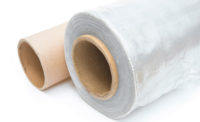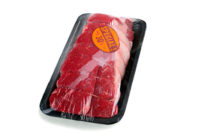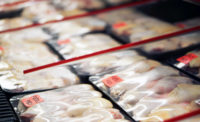Meat, poultry and seafood packaging ranks as a major consumer of specialty films, accounting for about one-third of the total market. In fact, demand for specialty films in meat, poultry and seafood packaging is forecast to expand 5.0 percent annually to $1.9 billion in 2017, according to a study by The Freedonia Group.1
Barrier films are particularly popular due to rising demand for case-ready and prepared meat, poultry and seafood products in vacuum skin packaging, modified-atmosphere packaging, lidstock-sealed thermoformed trays/formable bottom webs and retort pouches. When printed, film-based packaging builds brand identity and eliminates the need for a separate labeling operation.
Specialty films for meat, poultry and seafood packaging often consist of multiple layers achieved via coextrusion, lamination and/or coatings such as metallization or clear aluminum oxide. Each layer is chosen to enhance functionality by boosting barrier properties, strength, puncture resistance, anti-fog characteristics, sealability, shrinkability and/or cook-in-the-pack compatibility. Additional functionality may be provided by an “active” ingredient such as an oxygen scavenger, desiccant or sodium nitrate. The latter interacts with enzymes in the meat to produce nitric oxide gas, which in turn combines with the myoglobin in the meat to maintain its fresh “red” appearance.
Many specialty films offer barrier properties to protect and extend product shelf life. Common structures are based on polyethylene (PE) or polyethylene terephthalate (PET) and consist of three to 11 layers with barrier enhancement provided by ethylene vinyl alcohol (EVOH) or polyvinylidene chloride (PVDC). Shrink film/bags traditionally rely on PVDC, but more orientable grades of EVOH have broadened its use in these applications. EVOH’s high clarity and lower shrink tension minimize the visibility of product fluids at the edges of the pack and enhance product presentation. EVOH also is compatible with polyolefin and PET recycling streams.
Nylon, another possible barrier layer, offers durability, clarity and toughness at low temperatures. It also can be heat-shrinkable. Although PE frequently serves as the sealant layer, packaging for products with high fat content — bacon, for example — may specify an ionomer layer to enhance sealability.
To more precisely tailor film properties to the product, new technologies enable production of thin micro- or nanolayers. Layer counts can potentially approach or even exceed 100. The result is dramatic improvement in functionality without increasing the overall thickness of the finished material or the amount of barrier resin used. Shelf life can be further improved by including oxygen scavengers or desiccants in the micro- or nanolayer structure.
“Nanotechnology enables the alteration of the structure of packaging materials on molecular scale to give the materials multifunctional properties,” explained Yongdong Jiang of nGimat, an intellectual property company involved in nano-engineered materials, in a market study published by Visiongain, which forecasts strong growth for nanomaterials for food packaging between 2013 and 2023.2
Other experts agree nanomaterials have a bright future. Professor Cathy Barnes leads the Faraday Centre for Retail Excellence at Leeds Metropolitan University in the UK and works closely with many packaging companies to support innovation.
“There are huge opportunities for nanotechnology in future film packaging,” she says. “Many of these deliver a more sustainable solution. Nanoclays added to film can improve many barrier properties and eliminate the need for lamination. And imagine structuring the film surface at the nanoscale in such a way that the refracted light gives color to the film without the use of pigments.”
1. Specialty Films –U.S. Industry Study with Forecasts for 2017 & 2022. The Freedonia Group, Cleveland, OH. May 2013.
2. Global Nano Packaging Market 2013- 2023: Opportunities for Nanotechnology, Visiongain, London, UK. June 2013.




Report Abusive Comment